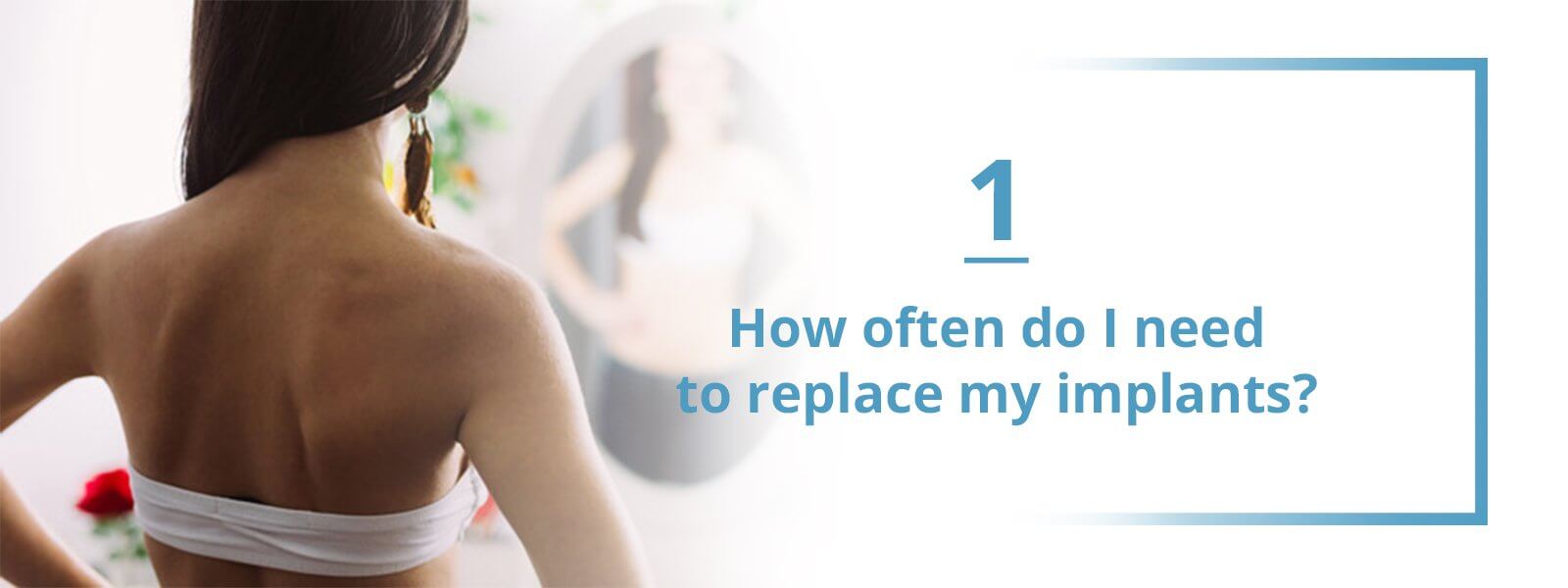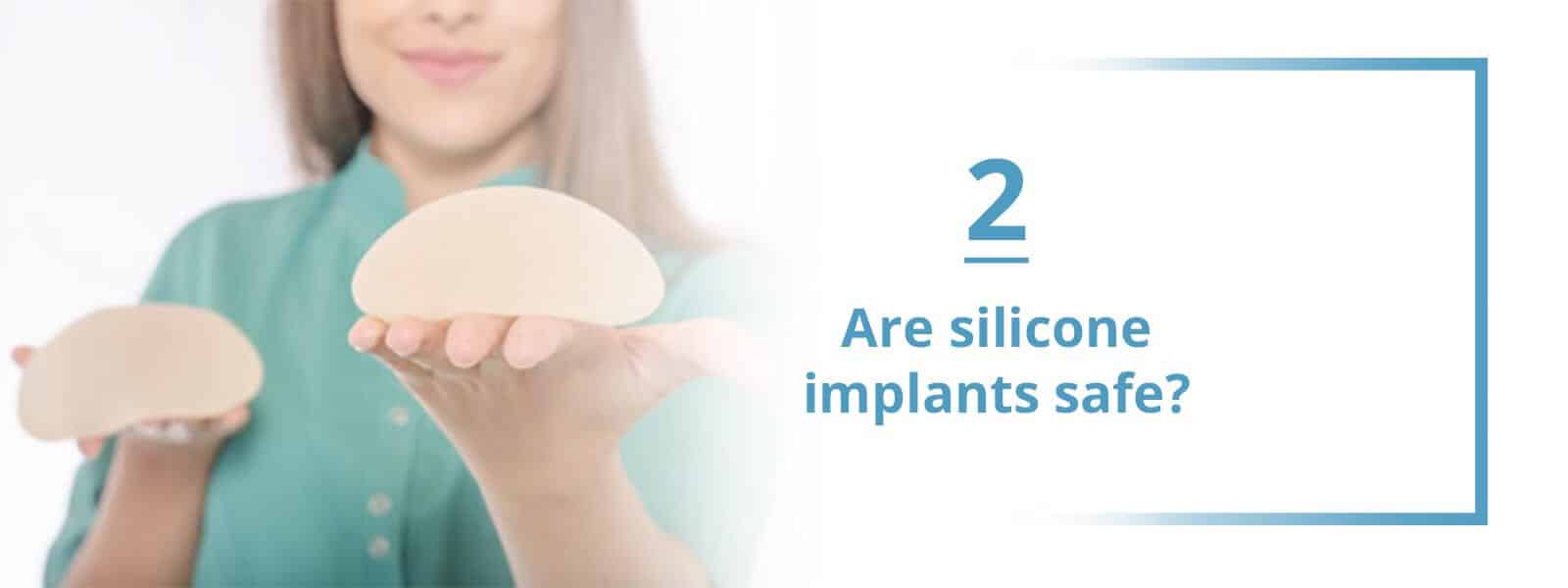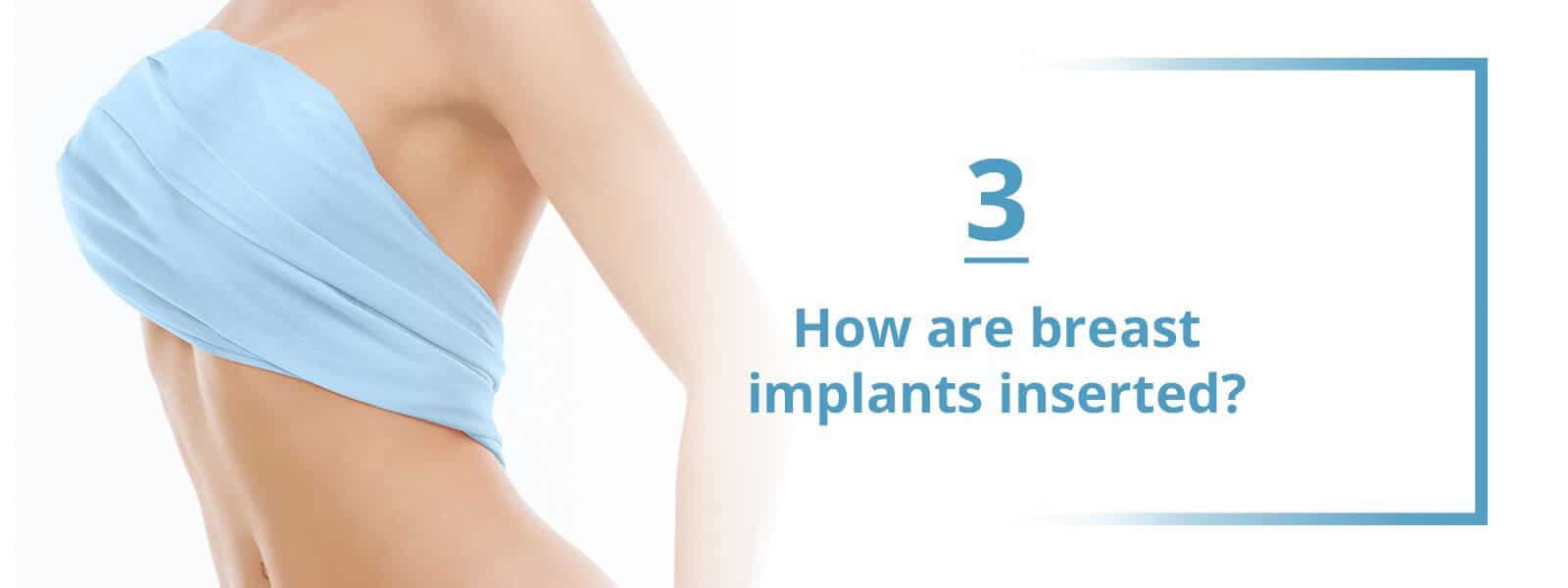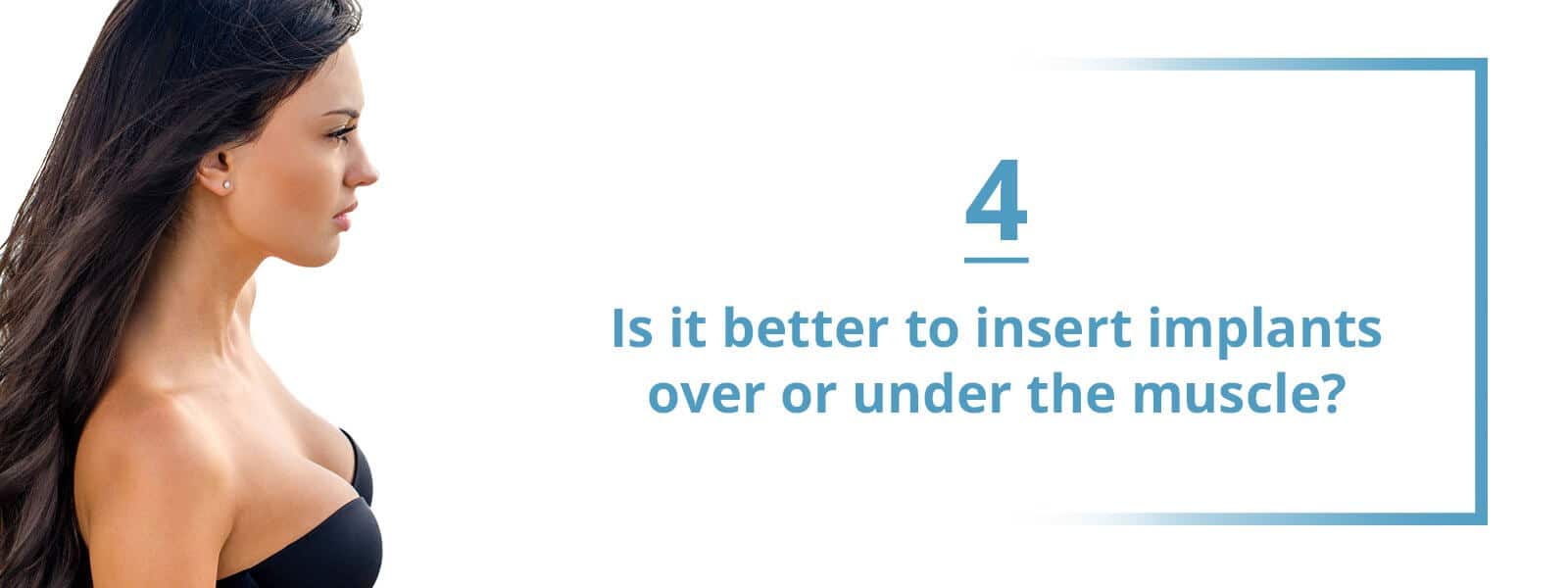Types of Breast Implants & When to Replace Your Implants
October 10, 2018

Last year, over 300,000 women elected to undergo breast augmentation, making it the most popular cosmetic surgical procedure in the United States. If you are considering this surgery, it is likely that you have more than a few questions floating around your head. That is why we compiled a list of answers to the top questions patients have asked about breast implant augmentation.

A five-minute google search may have you believe that 10 is the magic number; after ten years, your breast implants will expire…
We debunked this myth in a previous post, clarifying that this statistic is only true for 20% of women; the remaining 80% are enjoying their implants long after the first decade.
The truth is, this question does not have a definite answer and the “average lifespan” of an implant comes with no guarantees. A breast implant is not like a brake pad that needs to be changed every few thousand miles. A breast implant will only need to be replaced in the event that a problem emerges. Although it is important to understand the possibility of a follow-up procedure when considering this surgery, the likelihood of lasting success is high, especially when working with a double-board-certified plastic surgeon. In fact, many of our patients have had their implants for 20 years or longer.

The short answer to whether or not silicone implants are safe? Yes, the FDA has approved silicone breast implants for the purpose of augmentation, reconstruction after breast cancer surgery or trauma, and for correction of developmental defects. Numerous studies also show that the majority of breast augmentation and reconstruction patients are satisfied with the results of the surgery.
When considering breast implant augmentation, open communication with your plastic surgeon is essential. Patients should feel comfortable, confident, and well-informed about their decision to undergo any cosmetic procedure, which is why it is recommended you do adequate research before opting into surgery and choose a board-certified plastic surgeon you fully trust.
All FDA-approved saline and silicone gel-filled breast implants have a Summary of Safety and Effectiveness Data (SSED) report, which provides a detailed summary of the risks, warnings, precautions, and studies associated with FDA approval of the device. The FDA advises individuals to review the SSED data for each implant to learn more about their characteristics and the fillers used.

Once the anesthesia has taken effect, the surgeon will make an incision in one of the following areas:
-
-
- Along the underside of your breast (inframammary): this is the most common location used because it is where your skin naturally folds. When the incision is made in this area, scarring may be slightly more visible, especially if you are younger, thinner, and have not yet had children.
-
- Under your arm (transaxillary): this type of incision most likely requires the surgeon to use an endoscope, a tool that can be inserted into an incision site to help the surgeon guide the implant into place. Instead of having a scar along the underside of your breast, like an inframammary incision, you may have a scar on the underside of your arm.
-
- Around the nipple (periareolar): a periareolar incision can help camouflage a scar but may also cause problems with loss or change of sensation in the nipple.
- Through the mastectomy scar: this incision is for patients undergoing breast reconstruction surgeries.
-

This depends on a patient’s anatomy, but typically we place the implant below (submuscular) the chest wall muscles opposed to above (subglandular). For both locations, there are unique pros, cons and considerations; thus, it is important to consult an experienced plastic surgeon before deciding on an approach.
Benefits of submuscular placement (below the pectoralis muscle) include reduced rates of sensory loss in the nipple and areola, greater visibility of native breast tissue during mammography, and a reduced likelihood of hematomas (bruising) near the implant after surgery. Drawbacks of placing the implant under the muscle include reduced size potential of the breast and the potential for increased postoperative pain due to muscle disturbance.
Women with adequate breast tissue are the most common candidates for subglandular placement (above the chest wall muscle). This type of placement is considered less invasive and typically leaves room for larger implants and more pronounced cleavage. However, there are shortcomings to keep in mind when considering this method. Sometimes the soft tissue can harden due to stretching and begin to form fibrous tissue, causing pain and deformation of the implant. The implant may also create vertical folds to appear on the surface of the breast, known as rippling, which occurs most often in women who have a limited amount of overlying natural breast tissue.

